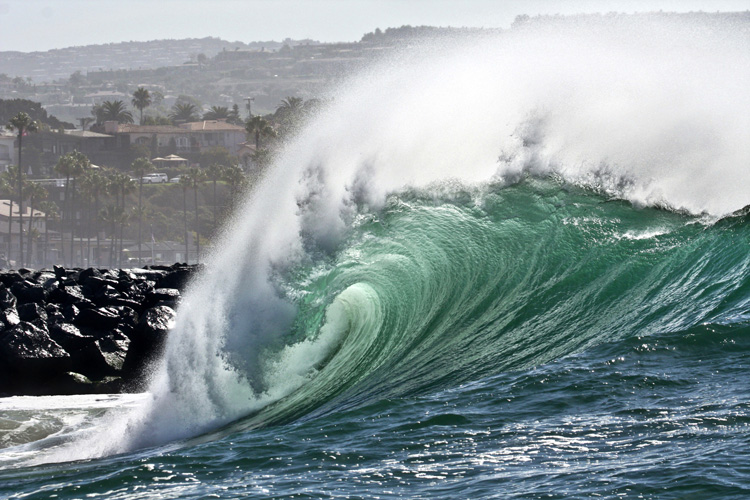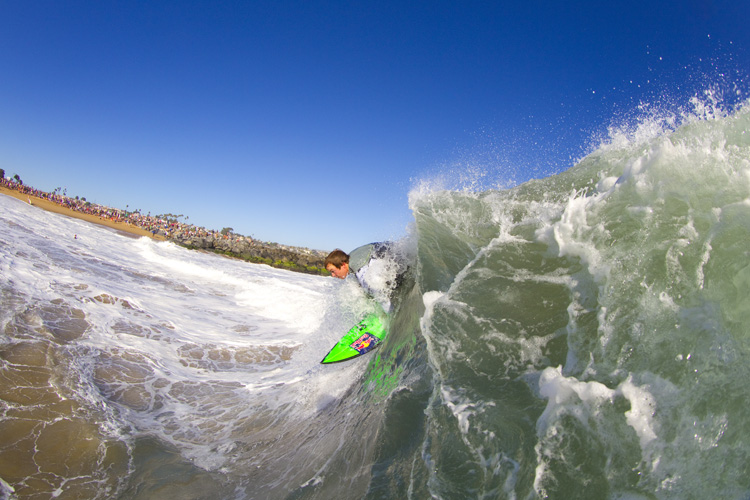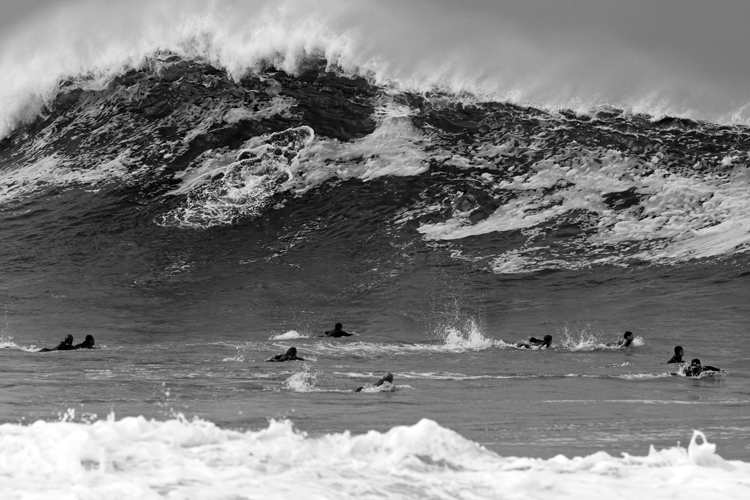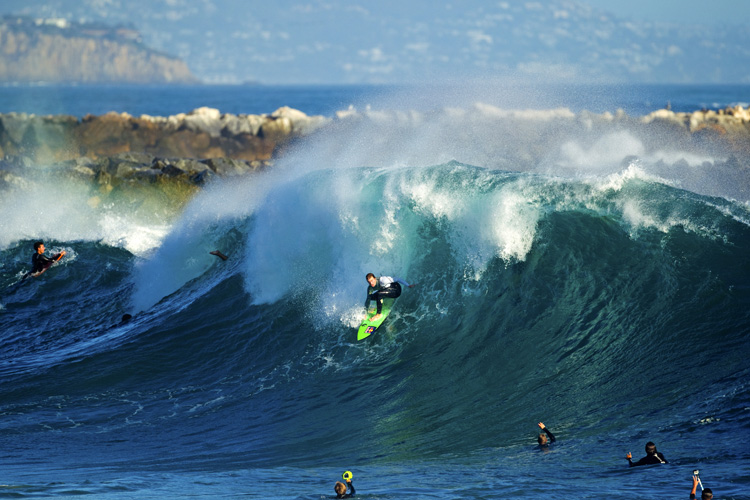The Wedge is a freak phenomenon in which incoming waves rebound off the local jetty and double in size before crashing violently onto the sand.
Located on the outskirts of Los Angeles, Newport Beach's The Wedge is one of the most challenging waves in California and probably one of the toughest wave-riding experiences on the West Coast of the United States.
Its name says it all. This notorious wedgy surf spot mixes the main characteristics of a classic beach break, an unpredictable point break, and a pounding shore break.
The Wedge is the natural result of a 2,000-foot granite boulder jetty built by the Army Corps of Engineers in the mid-1930s. It was first ridden by bodysurfers in the late 1950s.
During powerful groundswell days, The Wedge becomes the epicenter of the brave and one of the busiest surfing centers in the region, with dozens of experienced watermen in the water ready to show off and impress the crowd on the beach.
The Wedge can also be seen as a sadomasochistic activity center where thousands of bones, teeth, and ribs have been broken, and countless bruises, cuts, and other injuries have been sustained.

Not For The Faint of Heart
You've got to be ready to tackle The Wedge on a big day.
This wave is a mutant beast that provides towering peaks and vertical abysses and can only be categorized as a hardcore surf break.
The place produces brutal and sometimes funny and entertaining moments for those who watch the show unfold from a comfortable outside position or from behind a camera lens.
Naturally, The Wedge became one of the most photographed and filmed surf spots on the planet.
Even on medium-sized days, hundreds of amateur and professional lensmen eager to capture the flashy wipeouts and the perfect rides invade the surfing jewel of Newport Beach.
There are many ways of enjoying this wave. Today, The Wedge is known for attracting surfers, bodyboarders, skimboarders, and bodysurfers, and they all know what to expect.
During carnage days, only the youngest, the fittest, and the craziest names in town are willing to defy the massive A-frames on offer at The Wedge.
In other words, it's the perfect place for war veterans and exhibitionists who think fear is nothing to fear.

"The Wedge is easily the heaviest wave in Southern California with hard sand and thick lips," Jeff Hubbard, world bodyboarding champion, once said.
Although it is mainly a left-hand wave, you can also backdoor it on a finless craft like a bodyboard or a skimboard.
But make no mistakes: there are increased chances it will close out on top of you.
If you're lucky, and when Mother Nature is on your side, you may end up claiming a successful barrel exit. But that is not the norm.
The Wedge explodes next to the Newport Harbor Jetty and one mile east of the Balboa Pier. It can be relatively easy to position for a flawless ride, but not all waves will allow you to escape the guillotine.
And to make things even harder, there's always a tricky backwash that can propel you up into the sky.
On a typical day at The Wedge, the spot will be pumping giant walls of water in the 15-to-30-foot range.
Be careful: subtle changes in the wind speed and direction, swell size and direction, and tide can turn the place into a nightmare.

Who Shouldn't Surf The Wedge?
If you're a beginner, a weekend warrior, or a not-so-confident intermediate wave rider, do stay away from The Wedge. Newport Beach's most famous surfing wave could be a deadly experience.
This is not a standard surf spot; The Wedge creates thick lips that will unexpectedly toss you down the face of the liquid mountain and side waves that will push you laterally.
If you're willing to give it a go, spend a few hours studying the breaking of the wave and pay attention to the way riders tame it without getting beaten up.
When you feel you're ready, paddle out and observe the behavior of the wave from the sidelines. Wait a few minutes or even a couple of hours.
Not all waves are surfable, and not all waves break the same way. You've got to feel it, commit to it, and then take off as soon as possible.
Two rules of thumb: avoid going right and stay away from the jetty. Otherwise, you'll end up in a hospital bed or a cemetery.
Respect the locals, and wait for your turn. Luckily, you will score the wave of a lifetime. The Wedge is adrenaline in its purest form.
The Wedge, Newport Beach, California | When and How To Surf It
Swell Size: 5-10 feet
Swell Direction: S/SW
Wave Height: 6-20 feet
Wind: Offshore (N/NE)
Tide: Mid, But Varies
Season: Late Summer/Early Fall
